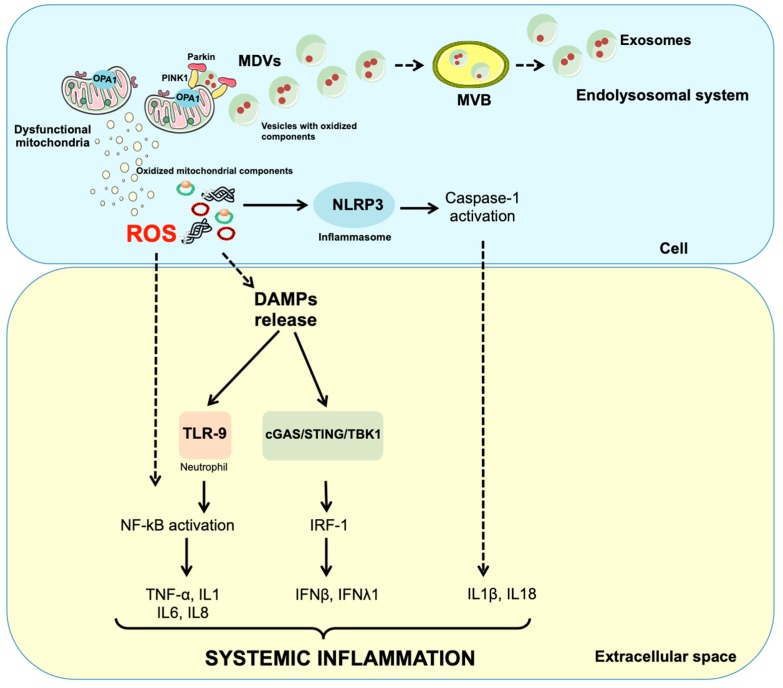Figure 2.
Schematic representation of possible mechanisms releasing mitochondrial components into the circulation. Dysfunctional but not yet depolarised mitochondria are targeted to degradation by serine/threonine-protein kinase PTEN-induced putative kinase 1 (PINK1) and Parkin. This priming process may also assist in the generation of mitochondrial-derived vesicles (MDVs). MDVs reach out the endolysosomal system and form multivesicular bodies (MVBs) that are unloaded outside the cell as exosomes. Impairment of mitochondrial quality control processes may also lead to accumulation of intracellular oxidised components that can be released as damage-associated molecular patterns (DAMPs) following a vesicle-free pathway. In particular, damaged mitochondrial transcription factor A (TFAM)-bound (green circles) or unbound (red circles) mitochondrial DNA (mtDNA) particles can be released as DAMPs. These molecules are pro-inflammatory and can activate three distinct signalling routes via interaction with (1) toll-like receptors (TLRs), (2) nucleotide-binding oligomerisation domain (NOD)-like receptor family pyrin domain containing 3 (NLRP3) inflammasome and (3) cytosolic cyclic GMP-AMP synthase (cGAS)-stimulator of interferon genes (STING) DNA-sensing system. IFN, interferon; IL, interleukin; IRF-1, interferon regulatory factor 1; NF-κB, nuclear factor κB; OPA1, optic atrophy 1; ROS, reactive oxygen species; TBK1, TANK-binding kinase 1; TNF-α, tumour necrosis factor alpha.

